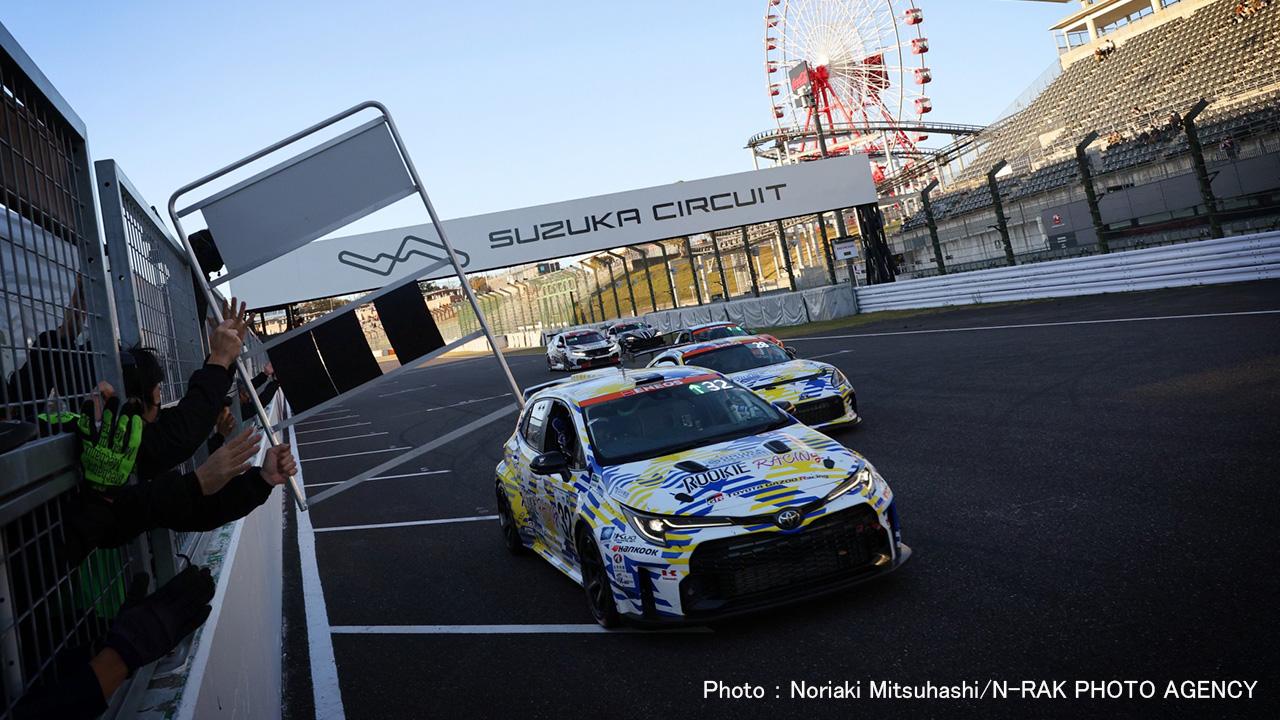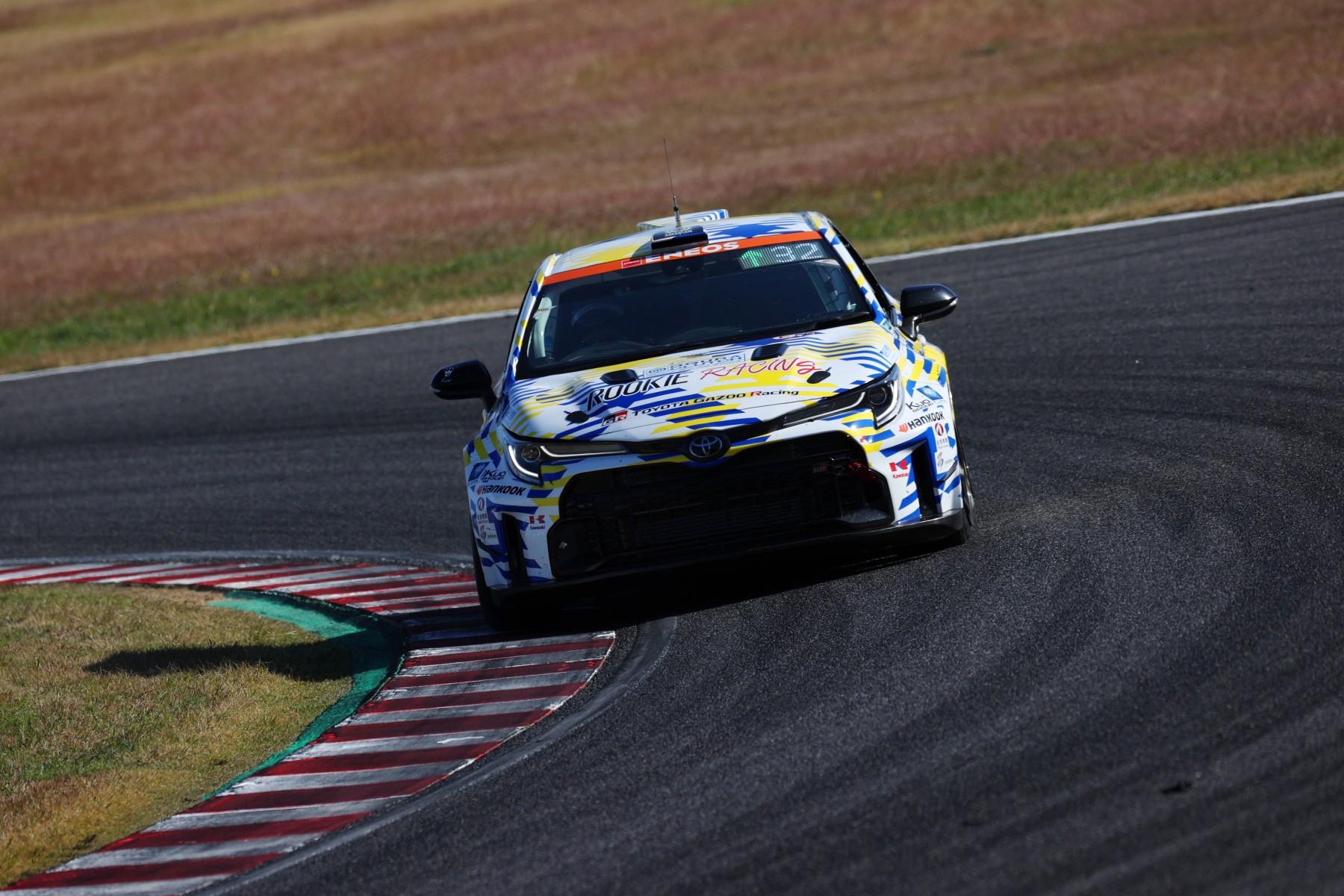
With the Super Taikyu Series, we are taking on the challenge of achieving carbon neutrality. This report summarizes the evolution of the hydrogen engine and the deepening of partnerships and teamwork during the second season of racing.

The seventh and final round of the Super Taikyu Series took place at the Suzuka Circuit in Suzuka City, Mie Prefecture on November 26-27. ROOKIE Racing’s hydrogen-powered GR Corolla and GR86 running on carbon-neutral synthetic fuel completed the race without incident, bringing the 2022 season to a close.
Participating in the Super Taikyu Series is a way to accelerate efforts to realize a carbon-neutral society. In two parts, Toyota Times will summarize efforts to make ever-better cars with motorsports as a starting point and build partnerships and teamwork.
Part 1 focuses on the hydrogen-powered Corolla.
A race focused on building the future after the second season
Akio Toyoda, a.k.a. Morizo, the owner of the ROOKIE Racing team, had this to say to the team at the morning meeting before the final race.
Toyoda
Through its actions and words, I believe this team has shown what happens when car enthusiasts, driving enthusiasts, and car manufacturing enthusiasts work toward achieving carbon neutrality.
This challenge will continue; however, just looking at these last six races, I can see that we have gained more partners with each race, while the team members who have been doing this for some time have also improved their skills. I believe that each and every one of you have contributed to our success.
This season, the hydrogen-powered Corolla increased its power output by 7%, torque by 5%, and driving range by 15%. Compared to its debut race last year, output has improved by 24%, and the driving range has improved by 30%. Pre-ignition suppression technology has also steadily improved, with the frequency of pre-ignition during the final race being reduced to less than half of what it was during the opening race.

Koji Sato, President of GAZOO Racing Company, spoke about making ever-better cars with motorsports as a starting point.
Sato
By pushing the car to its limits, problems can be quickly identified. We can then agilely formulate countermeasures to be ready for the next race.
Compared to a normal organization divided by function, those working on the frontlines of motorsports must function together as one, or nothing will move. So, from that perspective, they work in a completely different manner. The sense of speed has greatly increased because we have adopted this style of working and implementing measures to address identified issues.
This is the time when we want to create significant flow toward a goal (carbon neutrality) without holding back, so I think the project has a major impact in that sense.
If you are developing technology for a simpler car, much can be done in the laboratory; however, through the Super Taikyu Series, we are conducting a major demonstration trial aimed at achieving a hydrogen society.
Progress on production and transportation will not be made without collaboration generated in the field of motorsports and the insertion of realistic themes. This kind of thing cannot be done in a lab.
I believe great progress is being made with the demonstration trials because of initiatives developed with motorsports as the starting point.
Through this Super Taikyu initiative, they have found that developing a model to change classes, which normally takes three to four years, can now be done in one season. The development of a hydrogen-powered Corolla is progressing at an astonishing speed through participation in motorsports.

